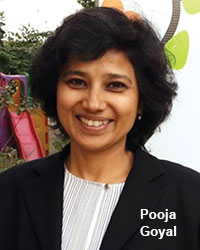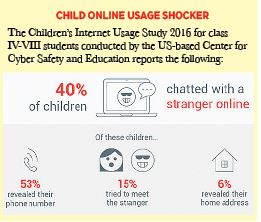Pooja Goyal recommends the ACT — Awareness, Communication and Take action — mantra to keep children safe
 It’s no longer a rarity to read bone-chilling reports of child sexual abuse in newspapers every day. India leads the world in child sexual abuse with 36,022 cases registered under the Protection of Children from Sexual Offences (POCSO) Act in 2014-2016. According to the National Crime Records Bureau, a child under 16 is raped every 155 minutes in the country. Moreover, a 2007 study conducted by the Union ministry of women and child development found that 53 percent of children countrywide reported experiencing “some form of sexual abuse”.
It’s no longer a rarity to read bone-chilling reports of child sexual abuse in newspapers every day. India leads the world in child sexual abuse with 36,022 cases registered under the Protection of Children from Sexual Offences (POCSO) Act in 2014-2016. According to the National Crime Records Bureau, a child under 16 is raped every 155 minutes in the country. Moreover, a 2007 study conducted by the Union ministry of women and child development found that 53 percent of children countrywide reported experiencing “some form of sexual abuse”.
In the new Google age, the issue of child safety is not limited to the home, park and school, but extends into the online world that 21st century children inhabit with as much ease as the physical world. The dangers and threats lurking in cyberspace are numerous. A recent cyber bullying study conducted by the US-based i-Safe Foundation found that more than half of adolescents surveyed are victims of cyber bullying with most of them not reporting such abuse to their parents.
Obviously, it’s impossible for parents to shadow their children, especially teenagers, every waking hour. Therefore it’s imperative that parents educate and train children, especially adolescents to be watchful, alert, identify offline and online threats and immediately report abuse, enticements and threats to parents. I strongly recommend the ACT — Awareness, Communication and Take action — mantra to parents to keep children safe.
Awareness. The first step for the safety of children is to remain connected with them and encourage two-way communication. Dinner table conversations, bedtime routines, or a walk in the evening are ideal times to have free-flowing one-on-one conversations with children. If you are a connected and involved parent, your antenna will easily detect signals of a distressed child. Also, make it your business to monitor websites and apps frequently used by children while making efforts to know their friends.
 Communication. Educate children about good and bad touch and the meaning of consent at young age. Teach her that it is OK to say No to an adult, child, grandparent and/or relative if their touch makes them uncomfortable. I strongly recommend these two books to help start the conversation — No Means No by Jayneen Sanders (2015) and Amazing You by Gail Saltz (2008). Moreover, educate them about the dangers of sharing personal information or interacting online with strangers. Children whose parents have explicit conversations with them about online/offline safety threats are more likely to report abuse.
Communication. Educate children about good and bad touch and the meaning of consent at young age. Teach her that it is OK to say No to an adult, child, grandparent and/or relative if their touch makes them uncomfortable. I strongly recommend these two books to help start the conversation — No Means No by Jayneen Sanders (2015) and Amazing You by Gail Saltz (2008). Moreover, educate them about the dangers of sharing personal information or interacting online with strangers. Children whose parents have explicit conversations with them about online/offline safety threats are more likely to report abuse.
Take action. Supportive and decisive response from one or both parents is critical for stemming abuse and aiding emotional recovery. Children need to know that parents will listen, believe and respond swiftly to their complaints. Moreover, as teenage children spend more time away from parents, encourage them to trust their own instincts and develop good judgement skills.
(An alumna of IIT-Delhi and INSEAD, France, Pooja Goyal is a serial entrepreneur and chief strategist officer of KLAY Schools)























